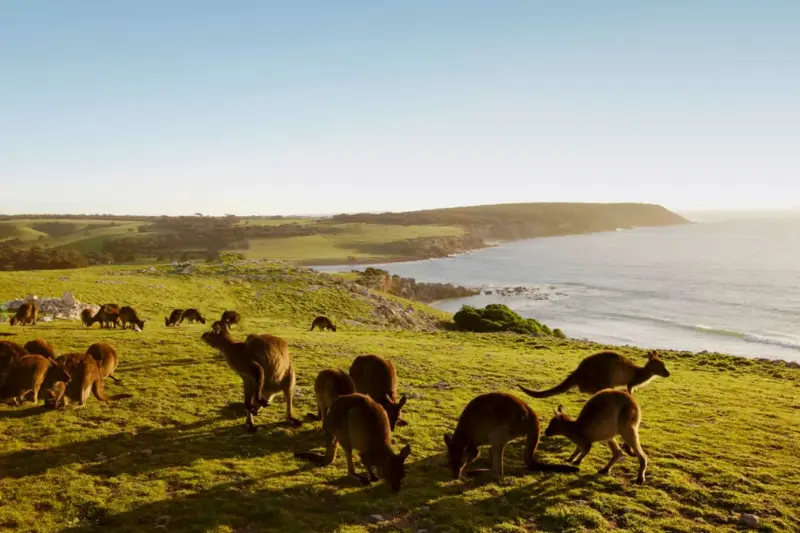
How to Plan a Sustainable Trip Down Under
Australia’s natural beauty, vibrant cities, and rich culture make it a dream destination for travelers around the world. However, as tourism grows, so does the impact on the environment and local communities. Planning a sustainable trip to Australia is more important than ever, and it’s easier than you might think. With a little planning and mindful choices, you can explore the Land Down Under in an eco-friendly and responsible way, leaving a positive impact on the environment and supporting local communities.
1. Choose Eco-Friendly Accommodation
When it comes to sustainable travel, where you stay makes a big difference. Australia boasts a wide range of eco-friendly accommodations that prioritize sustainability, from eco-resorts to boutique hotels. Look for certifications like Green Star or EarthCheck, which indicate a commitment to energy efficiency, waste reduction, and sustainable practices. Many eco-lodges are located in natural settings, offering an immersive experience while minimizing their environmental footprint. Staying at these accommodations not only reduces your impact but also supports local conservation efforts.
2. Travel by Public Transport or Eco-Friendly Options
Australia’s major cities are well-connected by public transport, and using buses, trains, and trams is one of the most eco-conscious ways to get around. Sydney’s efficient train and bus network, Melbourne’s trams, and Brisbane’s easy-to-navigate buses provide low-carbon travel alternatives. If you’re traveling between cities, consider taking a train or coach instead of flying, as it can significantly reduce your carbon footprint.
For those visiting more remote areas, electric vehicle (EV) rentals are an increasingly popular option, helping you explore while reducing emissions. Many regions, including Sydney and Melbourne, offer EV charging stations, so you can travel with ease and sustainability in mind.
3. Support Local and Sustainable Food
One of the best ways to immerse yourself in Australia’s culture is through its food, but you can make your culinary experience even more sustainable by supporting local and organic food producers. Choose restaurants and markets that focus on sustainable, seasonal, and locally-sourced ingredients. In cities like Melbourne, Sydney, and Adelaide, you’ll find plenty of eateries and farmers’ markets dedicated to showcasing Australia’s diverse regional produce, from fresh seafood to organic vegetables.
Additionally, consider exploring indigenous Australian cuisine, which often incorporates locally foraged ingredients like bush tomatoes and wattleseed. By supporting these local food initiatives, you contribute to both sustainable food systems and the preservation of Australian culinary traditions.
4. Minimize Waste and Choose Eco-Friendly Products
Reducing waste is an essential part of sustainable travel. One of the easiest ways to minimize your environmental impact is by reducing single-use plastic. Carry a reusable water bottle, travel mug, and shopping bags to avoid contributing to the growing plastic waste problem. In Australia, many cities are moving towards banning single-use plastic, and you’ll find many cafes and stores offering discounts to customers who bring their own reusable items.
Additionally, choose products with minimal packaging, and dispose of any waste responsibly. Many tourist destinations in Australia have recycling programs and initiatives to keep the environment clean, so make sure to follow these practices during your trip.
5. Choose Nature-Based Activities with a Low Environmental Impact
Australia’s natural wonders are a major draw for travelers, and the country offers an abundance of eco-friendly activities that allow you to enjoy these landscapes while preserving them for future generations. Explore Australia’s national parks, beaches, and forests with guided eco-tours led by knowledgeable locals. These tours often focus on environmental education and the importance of conservation, allowing you to learn about the region’s unique flora and fauna while minimizing your impact.
If you’re visiting the Great Barrier Reef, opt for eco-conscious tour operators who are committed to protecting the reef and its surrounding ecosystem. Many tour companies are involved in reef restoration and conservation, so choose one that is dedicated to sustainable practices.
For outdoor enthusiasts, Australia offers countless opportunities for hiking, cycling, and wildlife watching. Hiking through the Blue Mountains or cycling along the coast can be both enjoyable and sustainable, as these activities have a minimal environmental impact compared to motorized tours.
6. Respect Indigenous Culture and Communities
Sustainable travel is not just about the environment – it also includes supporting local cultures and communities. Australia has a rich Indigenous history, and respectful engagement with Indigenous communities is a crucial part of sustainable tourism. Take time to learn about the traditional landowners of the areas you visit and support Indigenous-owned businesses and cultural experiences.
Many regions offer immersive cultural experiences, such as Aboriginal art workshops, guided tours, and storytelling sessions, where you can learn about the history and traditions of Australia’s first peoples. By choosing to participate in these experiences, you help to support the preservation of Indigenous culture and contribute to the well-being of local communities.
7. Offset Your Carbon Footprint
Despite your best efforts, air travel can still contribute significantly to your carbon footprint. To help counteract this impact, consider purchasing carbon offsets. Many airlines offer carbon offset programs, where you can contribute to projects that reduce or remove greenhouse gases from the atmosphere, such as reforestation or renewable energy initiatives.
Additionally, you can take steps to reduce your footprint while traveling, such as limiting your use of electricity, opting for low-energy accommodations, and choosing activities that don’t rely heavily on motorized transportation.
Conclusion: Traveling Responsibly in Australia
Planning a sustainable trip to Australia doesn’t have to be difficult. By choosing eco-friendly accommodations, supporting local businesses, minimizing waste, and respecting the environment and culture, you can have a rewarding and responsible travel experience. Australia’s beauty is unparalleled, and with conscious planning, you can enjoy it while ensuring it remains preserved for future generations. Whether you’re exploring vibrant cities, pristine beaches, or vast wilderness, sustainable travel allows you to appreciate the Land Down Under in a meaningful way.
Subscribe